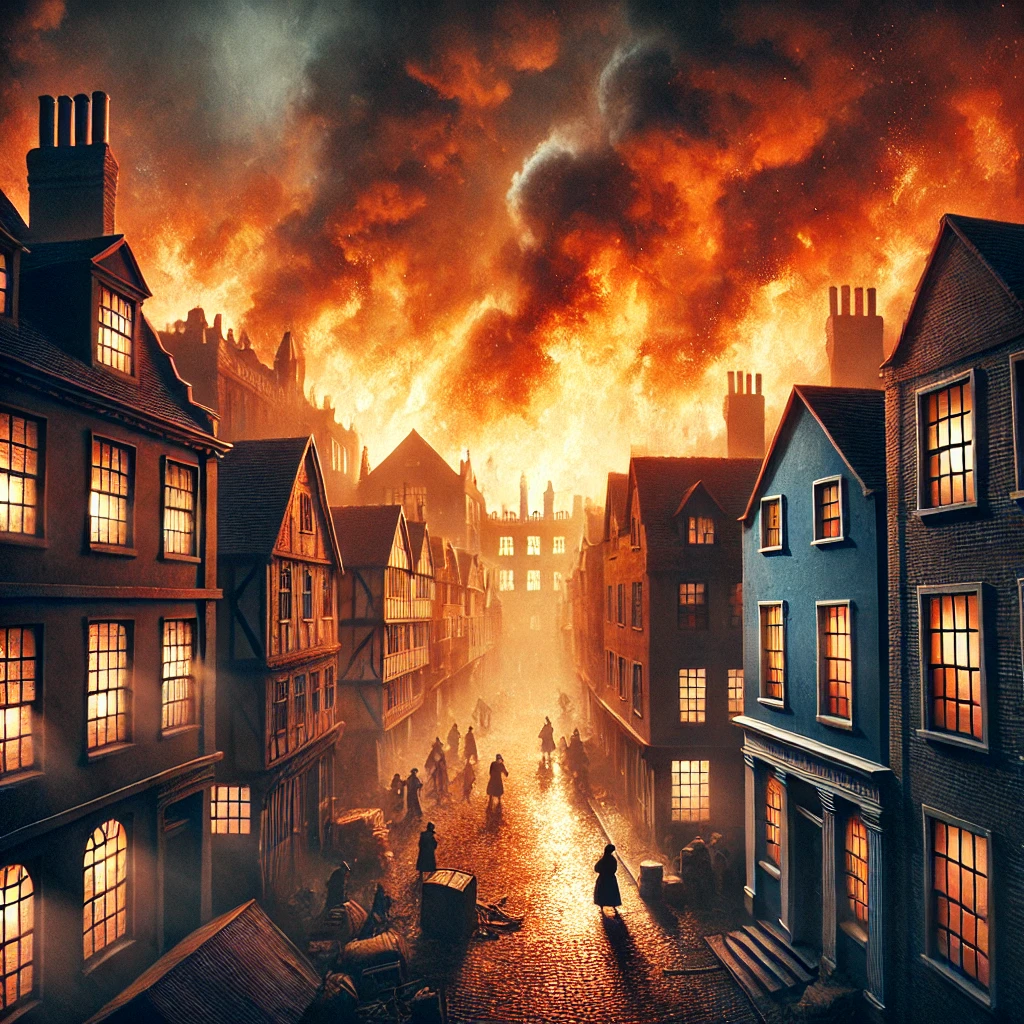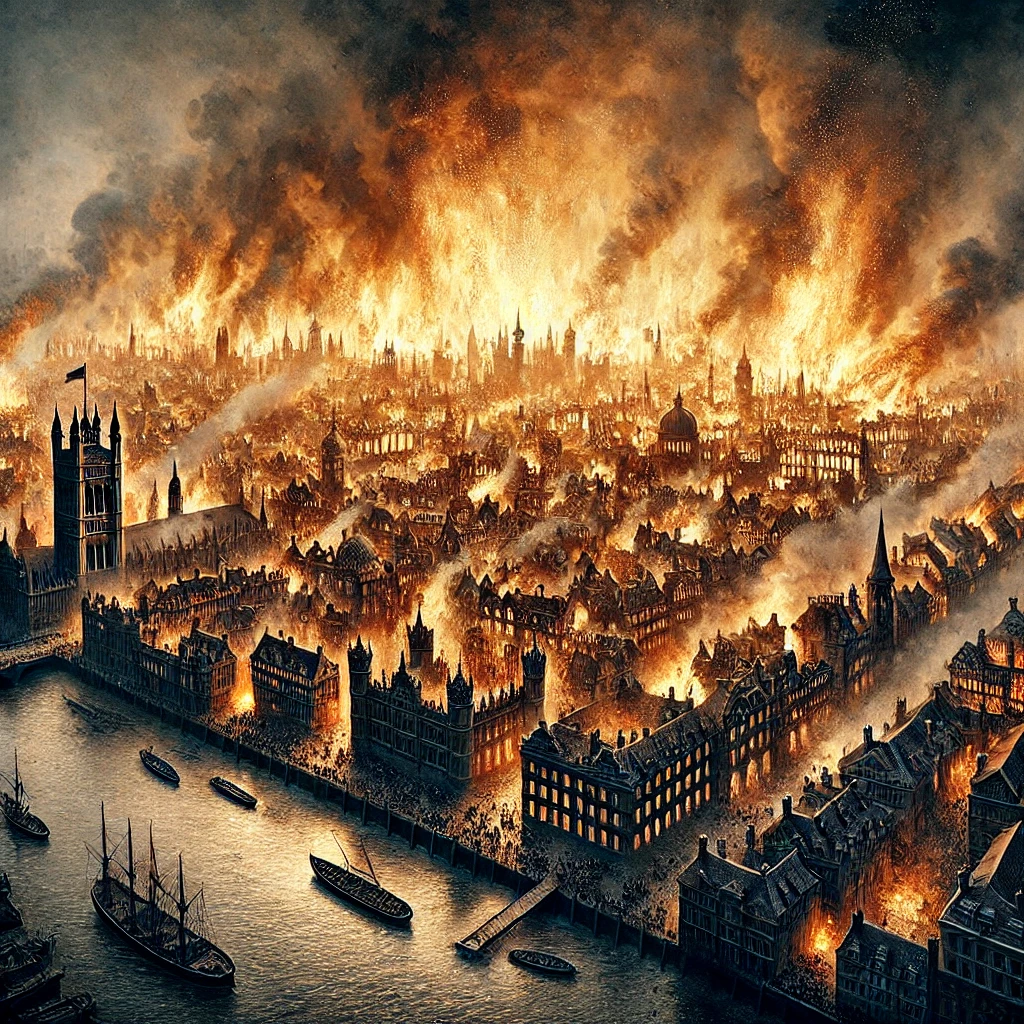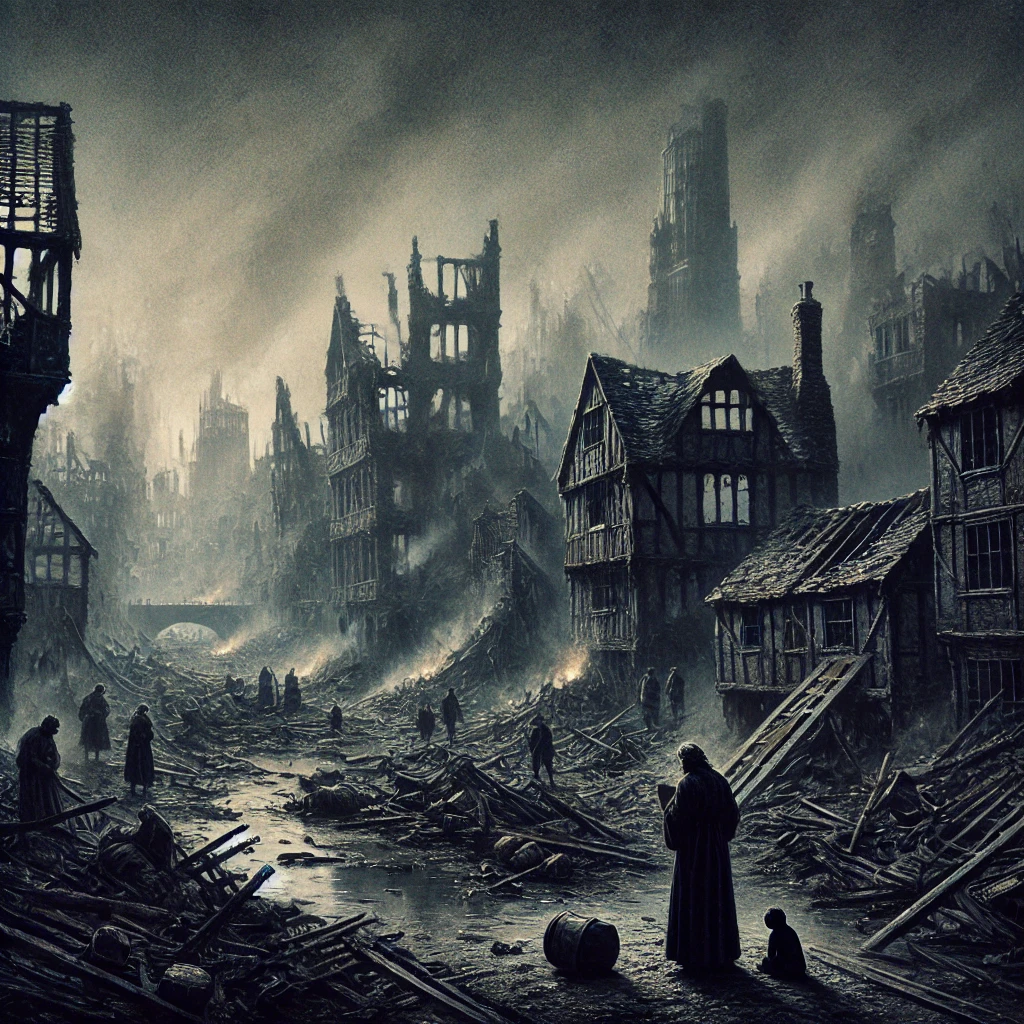On September 2, 1666, one of the most devastating urban fires in history began in London. Known as the Great Fire of London, this catastrophic blaze swept through the city over the course of four days, ultimately destroying a significant portion of the city and profoundly impacting its residents. The fire’s origins and subsequent impact have been the subject of much historical study, highlighting the event’s role in shaping London’s architectural and urban landscape.

The Outbreak and Spread
The Great Fire of London ignited early on the morning of September 2, 1666, in a bakery on Pudding Lane. The fire quickly spread due to a combination of factors including strong winds, the city’s predominantly wooden construction, and narrow, densely packed streets. Over the next few days, the fire raged uncontrollably, consuming much of the medieval City of London. By the time it was finally brought under control on September 6, the blaze had devastated approximately 13,200 homes, 87 churches, and numerous other buildings, including St. Paul’s Cathedral.
The intense heat and rapid spread of the fire were exacerbated by the city’s narrow streets and the prevailing dry conditions of that summer. Efforts to combat the fire were hampered by the lack of an organized fire-fighting force and the limited technology available at the time. Despite the desperate attempts by both residents and the military to contain the blaze, the fire’s sheer scale made it nearly impossible to control.

Impact and Aftermath
The aftermath of the Great Fire of London was both tragic and transformative. While the fire claimed relatively few lives—official estimates suggest fewer than ten—its impact on the city was profound. The destruction of thousands of homes and important buildings left many Londoners homeless and displaced. The fire also led to significant economic losses and disruptions, as businesses and trade were severely affected.
In the wake of the disaster, the reconstruction of London began under the leadership of King Charles II and the direction of notable figures such as Sir Christopher Wren. The rebuilding effort included the implementation of new building regulations aimed at reducing the risk of future fires. These regulations mandated the use of brick and stone in construction rather than timber, which contributed to the development of modern urban planning and fire safety standards in the city.

The Great Fire of London had lasting effects on the city’s architecture and urban design. The event spurred the creation of wider streets, better firebreaks, and more resilient buildings, shaping the future of London’s infrastructure. The fire also played a role in the establishment of insurance companies, as the need for financial protection against such catastrophic losses became apparent.
Today, the Great Fire of London remains a significant historical event, remembered for its dramatic impact on the city and its role in the evolution of fire safety and urban planning. Monuments and plaques throughout London commemorate the fire’s impact and the resilience of the city’s residents. The legacy of the Great Fire continues to influence modern approaches to city planning and disaster management, serving as a reminder of the importance of preparedness and adaptation in the face of adversity.
